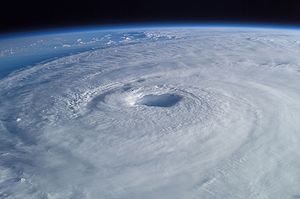
source: wikipedia
Just this week, the Atlantic Hurricane Season officially began (June 1st), and it is essential that you and your crews are prepared for severe weather conditions.
As we all know, hurricanes can devastate areas for months, even years. According to a recent article published by Reuters, Houston is still rebuilding from Hurricane Harvey that came barreling in last summer. In the year since Hurricane Harvey caused fatalities and an estimated $125 billion in property damage, there are still approximately 25,000 households that are displaced (source: FEMA), and nearly 80,000 homes that were impacted by a minimum of 18 inches of floodwater during the storm.
While areas that were impacted by such severe conditions still repair from last year, it is time for you and your company to be prepared for hurricanes that may be coming this season. To start, it is important to have an evacuation plan in place, and FEMA has helpful tools and information for forming evacuation plans as well as measures to take if evacuation is not an option.
According to OSHA, a thorough evacuation plan includes:
- Definition and guide for conditions that will activate the plan.
- A clear chain of command and reporting procedure.
- Emergency measures, functions and the responsible individual or team that will perform them.
- Evacuation procedures including exits and routes to be taken.
- Procedures for reporting location, status and accounting for personnel, customers and visitors.
- Safety equipment for all personnel.
After you have set your evacuation and severe weather safety plans, it is important that all workers have access to supply kits and receive the proper training to know how to assess severe weather and follow the appropriate course of action. To learn more about preparing supplies and setting up basic disaster supply kits, you can easily review the CDC’s Hurricane Preparedness supplies planning guide, as well as Ready.gov’s Basic Disaster Supplies Kit Checklist.
When training your crews and teams, you can run through emergency weather scenarios and exercises. Such practice should include ensuring that all workers know what to do in case of an emergency. Running through evacuation plans and providing a chance for employees to ask questions is something that you should make a regular part of your safety training and review. Additionally, any revisions or improvements that are needed based on what you and your team learn from the exercises should be used for updating plans and procedures to remain current.
Whether it comes to safety or technical knowledge, an informed crew is a successful crew. It doesn’t take much time to keep crews current on safety procedure, but it does require a significant amount of time to recover from not having a plan for extreme weather. Be prepared and safe, and help your crews understand and know how important their safety is to you and your business.
For more information on construction business and marketing tips, stay connected with the HBW Blog. To get ahead of construction activity and gain access to the latest permitting data in Florida, Texas, Georgia, Alabama and Oklahoma, contact HBW for more information on construction data reports and industry leads.
